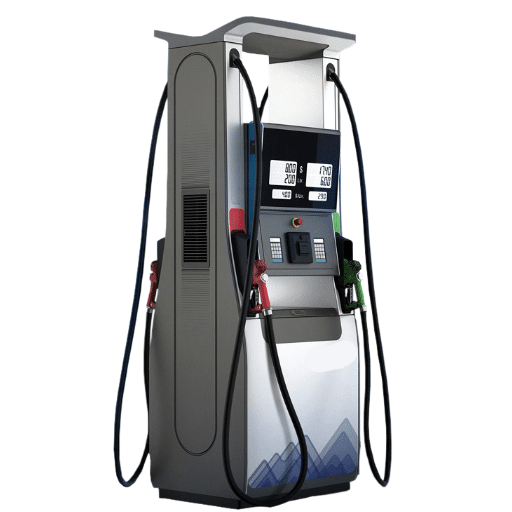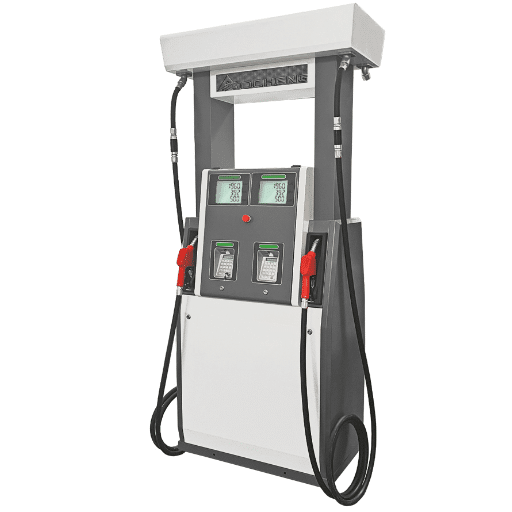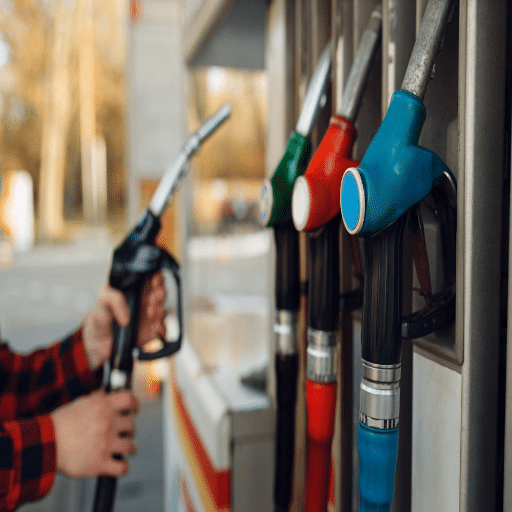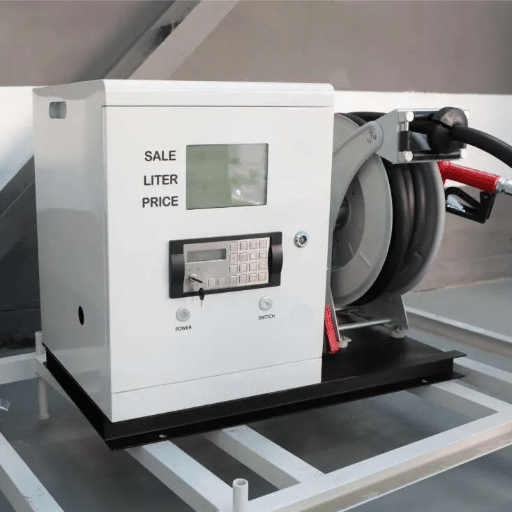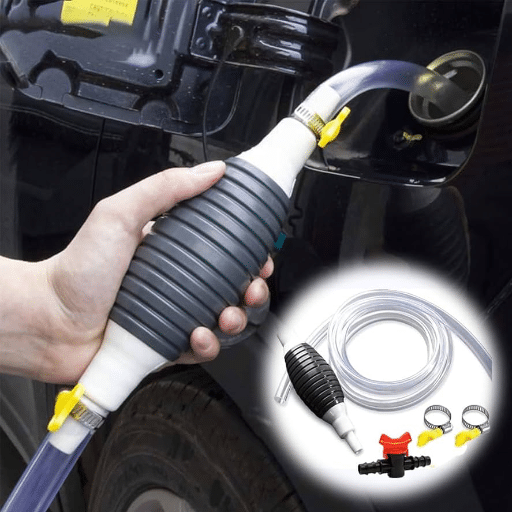Safety in hazardous environments is not just a priority, but a necessity. Whether it is chemical plants, oil refineries, or mines, the risk of explosions requires a carefully crafted approach to avoid disastrous incidents. Here is where LED-rated explosion-proof lighting comes in. Designed to be used and function safely in hazardous environments, these lighting solutions meet the highest standards of safety. But why are they so effective, and more importantly, why are they crucial to industries working in high-risk areas? We will delve into the innovation, superior benefits, and actual installation of LED explosion-proof lighting to illuminate how it guarantees safety and efficiency in some of the most demanding environments.
Understanding Explosion-Proof Lighting
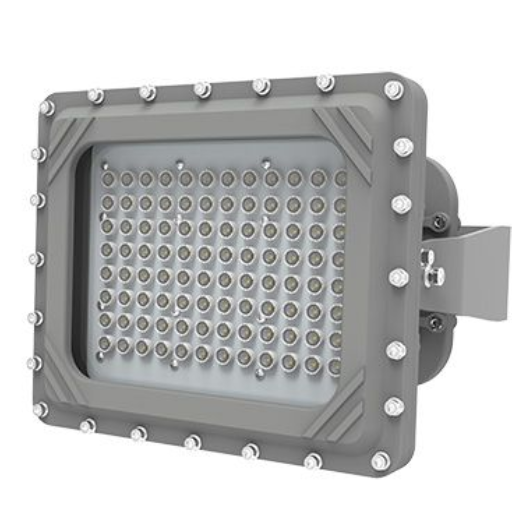
Lighting systems with explosion-proof features are specifically designed to prevent ignition in hazardous environments where flammable gases, vapors, or dust may be present. These lighting systems are designed to contain any sparks, heat, or explosions that could otherwise ignite the atmosphere. Explosion-proof lighting fixtures are constructed from robust, sealed cases that effectively isolate any potential ignition sources from the surrounding environment. This technology is necessary for industries such as oil and gas, chemical processing, and mining, where safety and adherence to stringent codes are paramount.
What is Explosion-Proof Lighting?
Explosion-proof lighting comprises the kind of lights specially designed to be safely operable in conditions under which flammable gases, vapors, dust, or fibers could exist in the atmosphere. They are designed to allow no ignition of explosive material in the atmosphere surrounding the fixture, ensuring the highest level of safety and reliability. The enclosures for these lights are made with heavy-duty materials such as aluminum, stainless steel, or reinforced glass to withstand wear and tear, as well as provide an airtight seal to prevent the escape of sparks, heat, or any explosion occurring inside.
Explosion-proof lighting installations are classified according to their safety levels for individual hazards, as specified in standards such as ATEX and IECEx. For example, Zones 1 and 2 are commonly located near oil refineries and gas plants. In contrast, Zones 21 and 22 represent areas affected by dust, such as food processing or grain storage facilities, to ensure the appropriate installation of explosion-proof lighting based on the level of risk.
Fortunately, according to data under review for population performance, newer explosion-proof lighting typically refers to LEDs with energy-efficient technologies and life spans of 50,000 hours or more. By eliminating the need for frequent replacements, LED lights also produce less heat, thereby decreasing the risk of ignition. Furthermore, with intelligent control systems integrated into the lighting setup, the lighting is now more effectively monitored and adjusted to function optimally, even in harsh conditions. Complying with explosion-proof lighting solutions thus reduces compliance downtime while improving worker safety.
Importance of Explosion-Proof Fixtures
Explosion-proof fixtures are lifesaving in industries where the environment is hazardous, such as the oil and gas, chemical, and mining industries. These fixtures are designed to contain sparks or arcs that could ignite flammable substances in the surrounding area. Data generated in recent years shows that nearly 15% of industrial accidents occur due to incorrect lighting solutions, further preparing the ground for the adoption of explosion-proof systems. The new generation of explosion-proof fixtures is made from materials such as aluminum or stainless steel, giving the fixtures an edge in terms of longevity and resistance to harsh environmental conditions. Additionally, modern LED technology has enhanced the efficacy of these fixtures, providing nearly 50,000 hours of illumination while consuming very little energy. Such an amalgamation of safety, longevity, and energy efficiency implies less maintenance and a safer working environment for employees in industries where lives are always at stake.
How Explosion-Proof Lights Work
With explosion-proof lighting, one can be sure that any exposure to a hazardous environment does not ignite flammable gases, vapors, or dust present in the atmosphere. The enclosure of the light is robust enough to contain any sparks or heat generated internally; thus, sparks or heat do not come into contact with the surrounding atmosphere. The casing is usually constructed using stainless steel or reinforced aluminum materials, designed to withstand impact and extreme temperatures.
Backed by international certifications such as ATEX or UL, explosion-proof lights undergo a rigorous testing regime. In this case, for example, ATEX Zone classifications provide a measure of risk for explosive atmospheres, against which lights are assessed based on their actual zones of application. Recent studies have shown that a 30% drop in workplace incidents has been observed in industries with explosion-proof lighting.
In addition, the application of LEDs to these lights further reduces the heat output and increases their luminous efficacy. LEDs used in explosion-proof light systems can reach an efficacy of up to 150 lumens per watt, thereby providing brighter light with less energy consumption. In addition to saving electricity, this heat limitation becomes vital for areas with potential high-risk concerns to avoid thermal build-up. Sealed joint designs combined with flameproof enclosures ensure minimal risk of hazardous exposure from these lights.
These lights, which combine sturdy construction with energy efficiency and strict safety codes, are essential for the oil, gas, chemical processing, and mining industries. These developments have turned into making workplaces safer and more efficient around the world.
Types of LED Explosion-Proof Lights
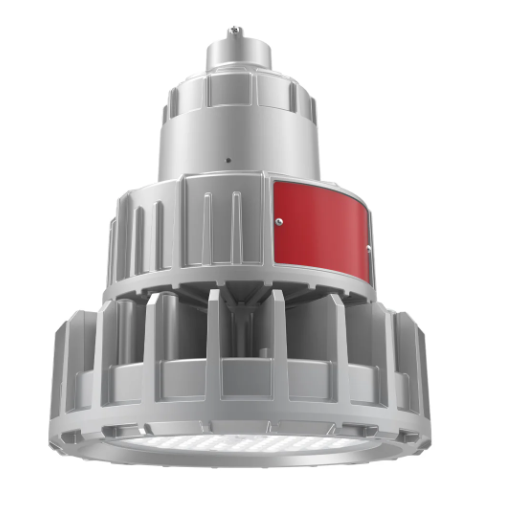
Floodlights: Generally, explosion-proof floodlights are designed for illuminating larger areas. They are primarily used in warehouses, refineries, and outdoor industrial areas to provide ample visibility in hazardous environments.
High Bay Lights: These lights are well-suited for facilities with high ceilings, providing concentrated and energy-efficient illumination in factories, processing plants, and storage areas.
Portable Explosion-proof Lights: Used for maintenance and inspection in confined or hard-to-reach hazardous areas, these lights fold away and serve as a handy flashlight.
Linear LED Lights: Small and providing uniform lighting for corridors, vessels, and tunnels, these concealed LED linear lights are ideal for confined spaces.
Emergency Explosion-Proof Lights: These lights activate in the event of a power failure, protecting personnel and equipment in critical areas from potential accidents.
All types of LED explosion-proof lights prioritize both safety and practicality in environments where risk is always present.
LED Explosion-Proof Light Fixtures
LED explosion-proof light fixtures are equipped with advanced safety features and constructed from durable materials. These fixtures are suitable for hazardous environments, such as oil refineries, chemical plants, and mining operations, among others. These fixtures have the best energy efficiency, meaning they consume less power while giving out more lumens per watt. Further, these lights can last long enough to reduce maintenance and downtime in some critical regions. Highly resistant to shock, vibration, and extreme temperatures, these fixtures remain stable in the most demanding conditions. LED explosion-proof fixtures aid in creating a safer and greener industrial environment, utilizing their unique ability to operate effectively during power outages, combined with their very low heat emission.
High Bay LED Explosion Proof Lighting
Designed to meet the needs of industrial and hazardous working environments, this explosion-proof lighting for high bays combines robust and efficient performance with cutting-edge LED technology to produce extraordinary brightness, ranging from 10,000 to over 40,000 lumens. Suitable for spaces of various sizes and different ceiling heights, this lighting solution offers exceptional versatility. Energy-wise, these provide brilliant efficiency, exceeding 140 lumens per watt, which contributes to energy savings for consumers compared to traditional lighting sources.
Another significant benefit is durability. They are made from heavy-duty, corrosion-resistant materials, such as aluminum alloys and tempered glass, which enable them to withstand impact, moisture, dust, and temperature variations ranging from -40°F to 140°F. Moreover, with certifications meeting standards such as UL844, ATEX, and IECEx, their use in hazardous locations containing flammable gases, vapors, or combustible dust is well qualified.
The long lifespan (in many cases, up to 50,000 to 100,000 operational hours) is another great advantage, reducing downtime and maintenance costs for oil-and-gas applications, chemical plants, warehouses, and manufacturing spaces alike. Many models feature wide beam-angle configurations, adjustable mounting, and dimming control, allowing for the creation of lighting schemes that can fulfill various operational requirements.
High-bay LED explosion-proof lighting will have a significant impact in industrial environments where reliable illumination is required, even in the most demanding conditions, and thus remains an indispensable innovation that bridges the gap between outstanding performance, energy efficiency, and increased worker safety.
Vapor Tight LED Lighting Solutions
Vapor-tight LED luminaires provide a viable option for energy-efficient illumination in environments exposed to harsh conditions, including moisture, dust, or corrosive elements. The fitting is made vapor-tight to prevent ingress of water and contamination, making it suitable for installation in parking garages, food processing plants, car washes, and other similar applications.
Modern vapor-tight LED luminaires utilize durable materials, such as polycarbonate or fiberglass housings, and high-impact diffusers. Most of these are rated IP65 and above, which means they can resist powerful water jets, dust ingress, and hostile environmental conditions. For instance, some designs may even work in temperatures ranging from -40°F to 122°F, making them suitable for harsh climates.
Vapor-tight LED lights shine with their energy efficiency. A good LED can save up to 50 percent of the energy required by traditional fluorescents or HPS, while providing equal or even better illumination. These also come with excellent optics to provide uniform illumination and reduce glare. Some of the fixtures also feature sensors that detect motion, daylight harvesting, or dimming controls, allowing for efficient, individualized light settings.
In performance, if able, a vapor-tight LED can stay as long as 100,000 hours and save maintenance from tremendously high costs. These fixtures offer very bright, consistent illumination with color temperatures ranging from 3000K to 6500K, making them suitable for various applications. They also serve to turn consciousness green with their forbidden use of hazardous materials, such as mercury.
Combining toughness, efficiency, and additional features gives the vapor-tight LED luminaires the lead in setting trends for the highest-performing illumination in harsh environments.
Applications of LED Explosion-Proof Lighting
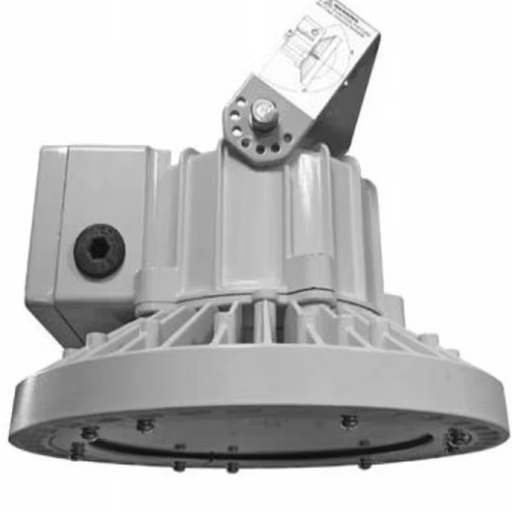
These LED explosion-proof lights are designed for use in areas where flammable gases, vapors, or combustible dust may be present. They must thus be illuminated safely without the potential to ignite any hazardous materials. They are typically found in industries such as oil and gas, chemical plants, mining, and manufacturing. Also known as offshore platform lighting, these lights are designed for use on rigs and wastewater treatment plants, and can withstand extreme conditions—a perfect choice for any hazardous location where safety and visibility are primary concerns.
Lighting for Hazardous Areas
There have been numerous changes in technology and equipment for lighting in hazardous locations, prioritizing safety while enhancing other features such as function and efficiency. Such dangerous location lighting nowadays may incorporate LEDs, which, due to their ruggedness and energy efficiency, offer a far better lifespan than conventional incandescent or fluorescent lamps. They consume 75% less energy and can last up to 50,000 hours, roughly equivalent to minimizing maintenance costs and downtime in industries.
Explosion-proof ratings, such as ATEX and IECEx certification, play a crucial role in ensuring compliance with safety standards in hazardous locations. They ensure that the lights have been designed with testing in mind to withstand explosive gases, vapors, or combustible dust safely. In oil and gas or mining sector settings, selecting the proper lighting is a necessary safety precaution.
Advanced controls further increase operational efficiency, with intelligent lighting systems and dimming options. An integrated motion sensor and remote monitoring setup will enable real-time adjustments and save energy, which is particularly relevant in large halls. Additionally, using corrosion-resistant materials ensures the light’s performance remains sealed against extreme temperatures, high humidity, or chemically exposed environments.
Design and material improvements make hazardous area lighting more flexible and tailored to particular industrial needs. With this combination of advanced safety features, energy efficiency, and ruggedness, industries can achieve compliance while also realizing substantial cost savings and increased workplace safety.
Use Cases in Industrial Settings
Given this perspective, we understand how hazardous lighting is deeply intertwined with safety and economics across industries. Situational awareness of explosion-proof lighting includes zones containing flammable gases or combustible dusts, such as those found in the oil and gas industry. Such lights aim to practically eliminate the presence of any ignition sources, thus adhering to safety standards such as ATEX and IECEx certification. Studies have revealed that companies utilizing and installing such robust lighting systems have registered a reduction in workplace accidents by at least 25%, thus making the work environment better protected.
Hazardous area lighting finds another primary application for manufacturing. In other words, factories handling highly volatile chemicals would install LED lighting that can offer high lumen outputs even in corrosive environments. LEDs can consume approximately 50 to 70 percent less energy compared to incandescent bulbs, yet provide good visibility, thereby saving on scaling costs in the long term. Retrofits employing energy-efficient LEDs have been shown to reduce energy expenses in such industrial establishments by around 30% annually.
In the utility and energy sector, hazardous area lighting is used in power plants and substations, where exposure to extreme temperatures or high humidity is a concern. The modern lighting in the sectors is designed to withstand such environmental extremes while maintaining consistent performance; however, it requires frequent replacement.
These cases demonstrate the diverse applications of hazardous area lighting and highlight its importance in ensuring safety, compliance, and cost-effectiveness in an industrial environment characterized by hazards.
Combustible Dust Environments
A combustible dust environment poses a high hazard in industrial settings, where even the mildest spark or heat source is sufficient to ignite suspended dust particles and cause an explosion. Industries that generate fine powders and particles during their operations stand at risk for such hazards. Research indicates that particle size, concentration, and oxygen availability are critical parameters.
Recent studies have shown that combustible dust incidents rank among the leading causes of injuries from industrial explosions, underscoring the importance of taking preventive measures. Lighting systems for these hazardous environments must be purposely designed to prevent them from generating heat and sparks and be dependable under dust-laden conditions. The implementation of explosion-protected lighting equipment that meets stringent safety requirements, such as those set forth by UL or ATEX, would significantly minimize the risk. Furthermore, industries are moving toward real-time dust monitoring systems and improved ventilation methods to prevent the accumulation of combustible dust, thereby creating a safer workplace.
Benefits of Using LED Explosion-Proof Lighting
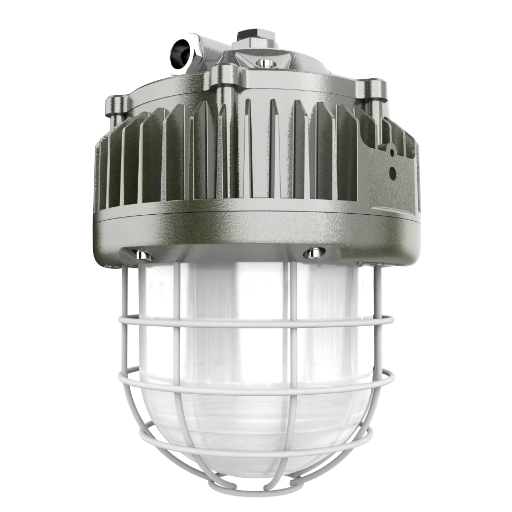
Enhanced Safety: LED explosion-proof lighting is primarily designed to prevent ignition in hostile atmospheres, thereby eliminating the risk of an explosion in areas containing flammable gases or dusts.
Energy Efficiency: LEDs tend to use less energy compared to traditional lights; hence, operating costs decrease, and there is a lower carbon footprint on the environment.
Durability: Constructed with tough materials, the LED explosion-proof lights can withstand extreme temperatures, shock, and vibrations, ensuring a high level of operational reliability.
Low Maintenance: With a longer lifespan relative to other types of lights, LEDs reduce the need for absolute replacement and repair, thereby lowering maintenance costs over time.
Better Light Quality: The LED shines bright and consistently, providing visibility with good color rendering properties, allowing productive work to be carried out in a gloomy environment.
Energy Efficiency of LED Fixtures
LED fixtures are very well known for their extraordinary energy efficiency compared to traditional sources of light, such as incandescent and fluorescent bulbs. LEDs consume up to 75% less energy for the same level of illumination, and often provide better illumination. The primary reason is that they convert a greater portion of the energy they receive into light, rather than wasting it as heat.
One of the key parameters that reflect the efficiency of a luminous source is the measure of visible light output per watt of electricity. Incandescent lights offer around 15 lumens per watt, while fluorescents boast luminescence ranging from 50 to 100 lumens per watt; modern LED fixtures surpass the 150 lumens-per-watt mark by a considerable margin.
Switching to LEDs also brings about environmental benefits. Commercial premises can consume up to 30-40 percent less energy, depending on the extent to which LED systems are installed. Moreover, LEDs can outlast their competitors; the acrylic or plastic range of LEDs is rated for 25,000 to 50,000 hours, compared to the 1,000 hours of an incandescent counterpart. Thus, they require less switching out and, consequently, consume less energy from production to transportation to final disposal.
With features such as dimming and motion sensing, these advanced LED setups offer additional opportunities for energy savings in industrial and commercial environments. These features, when used in combination, have the potential to reduce energy consumption by an extra 30%, enabling businesses to take a significant step in managing their costs and sustainability programs.
Longevity and Maintenance of LED Lights
The LED lights’ lifetime sets them apart from traditional lighting systems. An average-quality LED bulb has a lifetime of over 50,000 hours, while incandescent bulbs burn out after approximately 1,000 hours, and CFLs last around 10,000 hours. This extended lifetime reduces the need for replacements and, therefore, saves costs while also being environmentally friendly.
Maintenance is very low for LED, given its durable construction, which allows it to endure shocks, vibrations, and extreme temperatures. Unlike retro lighting systems, LED technology is more reliable due to the absence of those fragile components, such as filaments or glass enclosures. For companies, it means less downtime, lower maintenance costs, and fewer incidents of replacement and repairs.
In addition to extended life and low maintenance, many newer-generation LED systems feature innovative built-in designs that add value. For example, specific systems equipped with diagnostic capabilities can monitor LED performance, alerting the user to possible issues long before the problem becomes costly to resolve. Considering their long lifespan and ease of maintenance, LEDs remain among the most cost-effective options for residential, commercial, and industrial applications from a lifetime and sustainability standpoint.
Safety Features of LED Explosion-Proof Lighting
In a nutshell, explosion-proof lighting is designed for instances where safety is the primary concern in hazardous environments with flammable gases, vapors, or dust. The safety features in this lighting system include strong enclosures made of aluminum, stainless steel, or other sturdy materials, which can contain any sparks or heat generated inside. Moreover, the lights are also designed to limit their surface temperatures, preventing them from igniting nearby volatile materials.
Additionally, these lights feature a sealed construction to prevent moisture, dust, or corrosive agents from entering and compromising their functionality in harsh conditions. Advanced thermal management systems help stabilize performance by ensuring effective heat dissipation, in turn reducing forbidding factors such as heat or explosion. Another advantage LEDs offer in explosion-proof lighting is that they generate illumination without heating a filament, and thus constitute a significant ignition source in traditional types of lighting, such as incandescent and fluorescent. Such safety precautions have made LED explosion-proof lighting a necessity in industries like oil & gas, chemical plants, and mining.
Choosing the Right LED Explosion-Proof Light
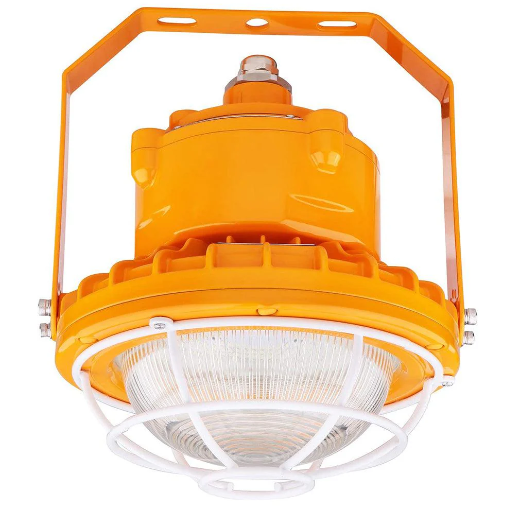
Below are some aspects you need to keep in mind when buying the right LED explosion-proof lighting:
Hazardous Environment Classification: Verify that the fixture meets the necessary safety standards for your specifications, taking into account hazardous locations classified as Class 1, Division 1, or Division 2.
Durability and Material: Corrosion-resistant materials must be used for the lights, and they must be sturdy enough to endure industrial conditions.
Lumens and Efficiency: Test the brightness (in lumens) and energy efficiency to ensure it is adequately bright while also saving on electricity.
Mounting Options: Depending on your space requirements, verify if the light offers flexible mounting options, such as ceiling, wall, or pole mounting.
Temperature Range: Check the operation temperature range to ensure the lighting functions properly in extreme temperature levels.
Following these considerations will help you adequately cover the needs of your industry in terms of safety, efficiency, and functionality when selecting LED explosion-proof lighting.
Understanding Lumen Output
Lumen output is always a crucial consideration when selecting any lighting option, particularly for industrial and hazardous environments. The lumen is the unit of measurement for the total quantity of visible light emitted by a source. The installation of lights with higher output will result in overall brighter light; hence, it is essential to select the right light depending on the area and task at hand.
Generally speaking, a standard incandescent bulb consumes 60 watts and emits 800 lumens; the LED equivalent consumes 8-12 watts to provide the same brightness. LED explosion-proof lighting has ranged in areas between 5,000 and 20,000 lumens and above in large industrial spaces to provide adequate illumination for safe and efficient operations. For instance, a 10,000-lumen fixture could safely illuminate anywhere between 10,000 and 15,000 square feet, depending on the ceiling height and application.
Moreover, one should consider the efficiency of the light source, expressed in lumens per watt (lm/W). Typically, modern LED explosion-proof lights have an efficiency rating greater than 130 lm/W, thereby drastically reducing energy costs compared to older lighting technologies.
Considering the lumen requirements and factors such as beam angle and uniformity of illumination, your lighting solution will be optimally suited for its environment.
40W LED Explosion Proof Options
For 40W LED explosion-proof considerations, I would recommend looking into models that combine high energy efficiency, such as 130 lm/W and above, with rugged construction suitable for hazardous environments. Always select a light source that provides the necessary beam angle and offers uniform illumination to meet the specific requirements of your application. Considering these factors, I can provide you with the best fit for your particular needs.
Reference Sources
“Research on LED Fishing Light”
“Outdoor Lighting Design Process Optimization”
Frequently Asked Questions (FAQs)
What is explosion-proof LED lighting?
Explosion-proof LED lighting refers to lighting fixtures designed to operate safely in hazardous locations where flammable gases, vapors, or dust may be present. These fixtures are constructed to contain any explosion within the fixture and prevent ignition of the surrounding environment, making them essential for industrial and commercial applications in such settings.
How do I choose the right explosion-proof LED light fixture?
When selecting an explosion-proof LED light fixture, consider factors such as the type of hazardous location, the required lumen output, and compliance with safety standards like UL 844. Additionally, assess the fixture’s durability, wattage options (such as 150W LED explosion-proof), and whether it meets the specific lighting requirements for your application.
What are the benefits of using LED explosion-proof lighting?
LED explosion-proof lighting offers numerous benefits, including energy efficiency, longer lifespan, and lower maintenance costs compared to traditional incandescent lights. They provide enhanced visibility in hazardous areas while ensuring compliance with safety regulations, significantly reducing the risk of potential ignition.
Are there specific lighting requirements for hazardous locations?
Yes, lighting requirements for hazardous locations are defined by the National Electrical Code (NEC) and involve classifications such as Class I, Division II, and Class II, Division 1. These regulations ensure that the lighting fixtures used in these environments are designed to withstand potential explosive atmospheres and provide safe illumination.
Can LED flood lights be used in hazardous locations?
Yes, LED flood lights specifically designed as explosion-proof fixtures can be used in hazardous locations. These lights offer wide-area illumination and are ideal for outdoor applications where safety and visibility are crucial. Ensure that the flood lights comply with relevant safety standards for hazardous area lighting.
What types of fixtures are available for hazardous area lighting?
A variety of fixtures is available for hazardous area lighting, including high-bay lights, shop lights, and specialized explosion-proof fixtures. Each type serves different applications, whether for indoor or outdoor use, and is designed to meet stringent safety standards to prevent potential ignition in hazardous environments.
How do explosion-proof lights differ from traditional lighting solutions?
Explosion-proof lights differ from traditional lighting solutions in their construction and safety features. They are built to contain any explosions that may occur within the fixture, thereby protecting the surrounding area. Traditional lighting does not offer this level of safety, making explosion-proof lighting essential in hazardous locations.
What is the maximum wattage available for LED explosion-proof lighting?
The maximum wattage available for LED explosion-proof lighting can vary, but commonly available options include fixtures ranging up to 150W of LED explosion-proof lighting. The choice of wattage should be based on the specific lighting requirements of the area being illuminated and the necessary lumen output for optimal visibility.
Are explosion-proof LED lights suitable for indoor and outdoor use?
Yes, explosion-proof LED lights can be suitable for both indoor and outdoor use, provided they are rated for the specific hazardous location conditions. Ensure that the fixtures are designed to withstand environmental factors such as moisture, dust, and temperature extremes, making them versatile for various applications.

